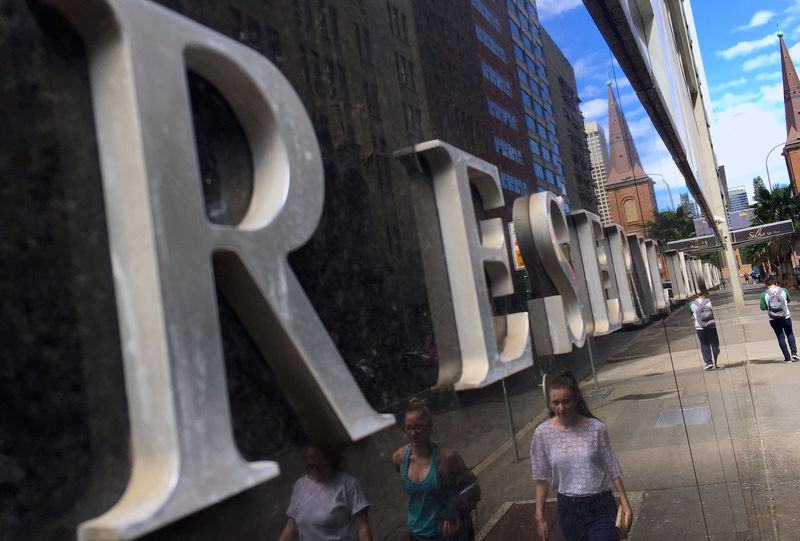By Swati Pandey and Wayne Cole
SYDNEY (Reuters) - Australia's central bank says coming data on inflation and employment will be critical for interest rates at its next meeting on Nov. 1, opening the door to a possible easing in policy.
A cut would surprise markets, which are pricing in only a small chance of an easing this year or next as Australia's A$1.6 trillion ($1.2 trillion) economy marks a quarter century of growth without recession.
New governor Philip Lowe said policy makers had to "guard" against the risk that sluggish consumer prices would feed into ever lower expectations for inflation, leading to an unwelcome downward spiral.
"Lowe emphasized low inflation expectations more than the previous governor ever did," said CBA economist Kristina Clifton, referring to the recently retired Glenn Stevens.
"Next week's Q3 CPI will be an important update. In our view, an underlying CPI of 0.3 percent or lower will trigger a rate cut at the November meeting." The data are due on Oct. 26.
Most forecasts are for underlying inflation to rise by between 0.4 percent and 0.5 percent, but the series has surprised on the downside for several quarters now. Indeed, it was those surprises that led the RBA to cut rates in August and May.
Consumer prices rose a meager 1 percent in the year to June while core inflation hit a record low at 1.5 percent, well below the RBA's target band of 2 to 3 percent.
Minutes of the RBA's October policy meeting drove home the importance of the coming price figures.
"Members noted that data on CPI inflation for the September quarter and an update of the (RBA's economic) forecasts would be available at the next meeting," the minutes showed.
"This would provide an opportunity to consider the economic outlook, assess the effects of previous reductions in the cash rate, and review conditions in the labor and housing markets."
Investors, however, still assume an easing is a distant possibility. Interbank futures <0#YIB:> imply only a 16 percent chance of a cut in the 1.5 percent cash rate next month. The Australian dollar <AUD=D4> actually climbed on the day.
MIXED SIGNALS
The RBA noted there was considerable uncertainty about momentum in the labor market with part-time work having accounted for all of the increase in jobs this year.
The next report on employment is due on Thursday and analysts tip a slight rise in the jobless rate to 5.7 percent.
Conditions in the housing market were mixed too. While turnover and mortgage growth fell from a year ago, prices in Sydney and Melbourne – Australia's most populous cities – continued to escalate. [nRUADLEC30]
On the positive side, the RBA said there was a reasonable prospect of sustaining economic growth and that a long slump in mining investment was past its worst.
Prices for some key commodity exports, notably coal and iron ore, had also rebounded thanks to stable economic growth in Australia's major trading partners.
Recent data showed Australia's gross domestic product (GDP) grew 3.3 percent in the year to June, the fastest pace in four years. It is forecast to enjoy at least another two years of solid economic growth. [nL4N1CK1AL]
"Overall, Lowe's comments suggest that if worries over housing/leverage abated and the labor market deteriorated -while inflation remained low - we think there is risk of further easing over the medium term," said UBS economist George Tharenou.

($1 = 1.3187 Australian dollars)